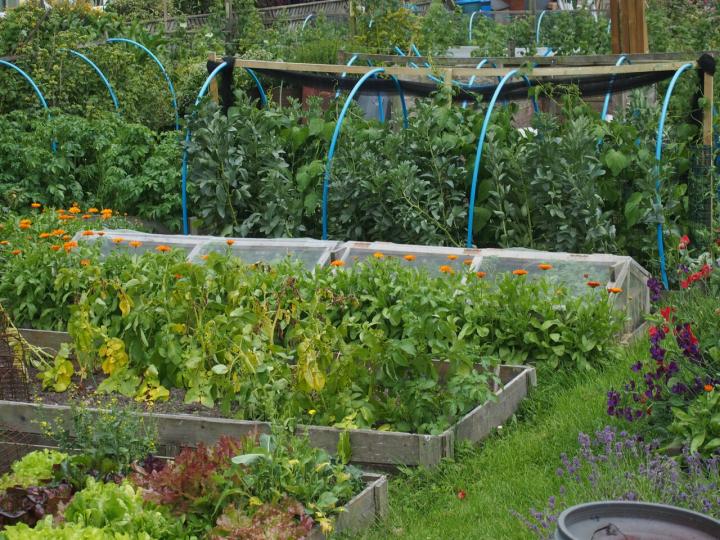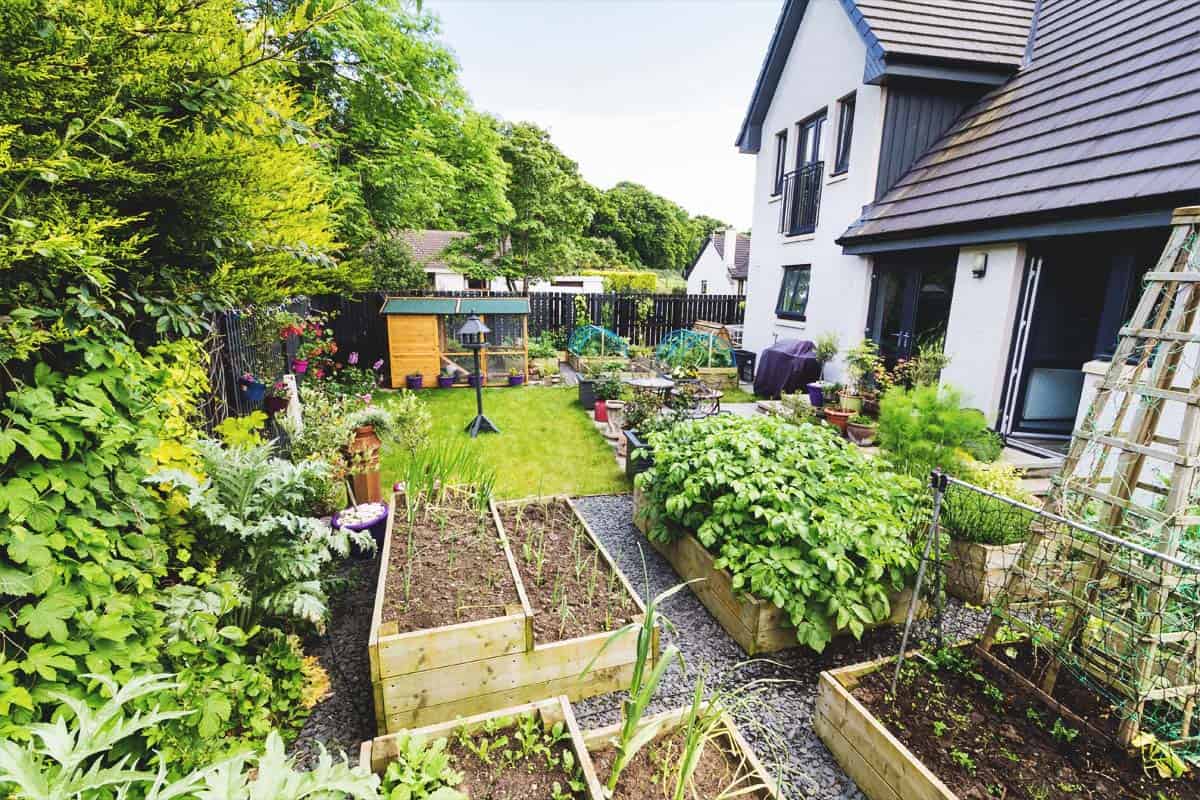How to Go Green with Homestead Gardening
How to Go Green with Homestead Gardening
Blog Article
Learn Just How to Grow a Flourishing Horticulture Setting for All Skill Levels
Producing a prospering yard is a diverse venture that can be welcomed by individuals at any kind of skill level. By checking out key elements such as dirt health and wellness, proper plant option, and seasonal care regimens, one can create a sustainable horticulture practice that produces satisfying outcomes. Comprehending just how to evaluate and boost your yard space lays the structure for success. The complexities of executing these concepts commonly existing difficulties that can prevent even the most enthusiastic beginner. What strategies can be used to get rid of these challenges and cultivate an absolutely flourishing atmosphere?
Understanding Your Garden Room
In the world of horticulture, understanding your garden area is paramount to growing a prospering landscape (Homestead Gardening). The initial step in this endeavor includes examining the particular attributes of your plot. Factors such as dirt make-up, sunshine exposure, and drainage play vital duties in establishing the suitability of your yard for various types of plants
Begin by carrying out a soil test to examine pH degrees and nutrition content, which will certainly notify any type of needed modifications. Additionally, observe how much sunshine your space gets throughout the day. Different plants have differing light needs; some prosper in complete sunlight, while others choose complete or partial color.

Last but not least, assess the offered room and strategy as necessary. This consists of thinking about plant elevations and spread out to ensure ample room for development without overcrowding. By obtaining a thorough understanding of your yard area, you established the structure for an effective horticulture experience.
Selecting the Right Plants
Selecting the right plants for your garden needs careful consideration of various factors, consisting of environment, soil problems, and personal preferences. Beginning by examining your local climate, as particular plants grow particularly temperature level ranges and weather patterns. Exotic plants may not make it through in colder regions, while hardy perennials can withstand severe winters.

Consider your personal choices, including aesthetic appeal and upkeep degrees. Decide whether you like dynamic flowers, lavish foliage, or edible plants. Additionally, consider the time and initiative you want to spend in plant care, as some selections require even more focus than others.
Finally, assume regarding the yard's layout and light exposure. Sunlight patterns throughout the day will affect your selections-- some plants require full sunlight, while others prosper in color. By attentively assessing these aspects, you can produce a efficient and harmonious garden tailored to your setting and tastes.
Important Gardening Devices
A well-equipped gardener can substantially improve their horticulture experience and end results. Crucial gardening tools are basic to cultivating an effective yard, regardless of skill level. A tough spade is indispensable for excavating and turning soil, while a trowel enables for exact growing and transplanting of smaller plants.
Trimming shears are important for keeping plant health and wellness by getting rid of dead or thick branches, promoting far better air circulation and development. Furthermore, a hand rake is valuable for removing debris and freshening the dirt, making certain optimal problems for plant roots.
Gardening handwear covers safeguard hands from thorns, blisters, and chemicals, making them a crucial accessory. A watering can or hose pipe with an adjustable nozzle makes certain that plants get adequate wetness without overwatering.
Lastly, think about purchasing a sturdy wheelbarrow for carrying soil, plants, and tools around the garden efficiently. By assembling a high quality toolkit that includes these crucial items, garden enthusiasts can take on numerous jobs with confidence and ease, leading the way for a flourishing gardening setting. Remember, the right tools not just improve efficiency however also enhance the total enjoyment of the gardening procedure.
Dirt Prep Work and Upkeep
Quality soil is the structure of an effective yard, making appropriate prep work and upkeep essential for healthy plant development. The first action in soil prep work includes evaluating its pH and nutrient degrees. This can be achieved with soil screening kits available at horticulture facilities or through expert services. Based on the test results, amendments can be made to maximize dirt conditions for certain plant needs.
Including raw material, such as garden compost or well-rotted manure, is crucial for enhancing soil structure and fertility. This not just enhances vitamins and mineral accessibility but likewise advertises useful microbial task. In addition, correct drainage is important; hefty clay dirts may require the enhancement of sand or perlite to enhance oygenation.
Normal upkeep of soil health basics and wellness includes mulching, which saves wetness and suppresses weeds. Turning crops each year helps stop nutrient exhaustion and decreases pest and condition dangers. It is likewise important to avoid over-tilling, which can interrupt dirt structure and injury helpful organisms.
Inevitably, a regular commitment to dirt prep work and upkeep will certainly cause a flourishing garden, guaranteeing that plants receive the crucial nutrients they need for durable development and productivity.
Seasonal Care and Administration

In spring, concentrate on growing new seeds and seedlings, while also performing dirt tests to amend nutrient deficiencies. Frequently examine for illness and parasites, as these can multiply with the warming climate. Summer needs regular watering and mulching to keep wetness, in addition to trimming for far better air circulation.
As autumn techniques, it's time to prepare the yard for dormancy. This consists of harvesting plants, cleansing up debris, and applying a layer of mulch to visit this site right here shield plant roots from frost. Consider planting cover crops to improve the dirt during the winter season months.
Finally, winter season treatment is crucial. Evaluate structures like greenhouses for damages and make sure proper insulation for delicate plants. Frequently check for pests that might seek haven indoors. By adapting your gardening practices to the seasonal cycles, you can foster a growing atmosphere that supports plant health year-round.
Verdict
In conclusion, cultivating an effective garden calls for a comprehensive understanding of crucial principles such as dirt composition, sunshine direct exposure, and suitable plant choice. Normal seasonal care and monitoring techniques further improve plant health and wellness and performance.
Selecting the right plants for your hop over to here garden needs careful consideration of different aspects, including climate, dirt problems, and individual choices. Conduct a dirt test to determine pH levels and vitamins and mineral web content, which will certainly guide you in choosing plants that will certainly flourish in your yard.Last but not least, think about spending in a tough wheelbarrow for transferring dirt, plants, and devices around the yard successfully.Quality dirt is the structure of an effective garden, making appropriate prep work and maintenance essential for healthy and balanced plant growth. Homestead Gardening.In verdict, cultivating an effective garden needs a thorough understanding of necessary principles such as soil structure, sunlight exposure, and ideal plant choice
Report this page